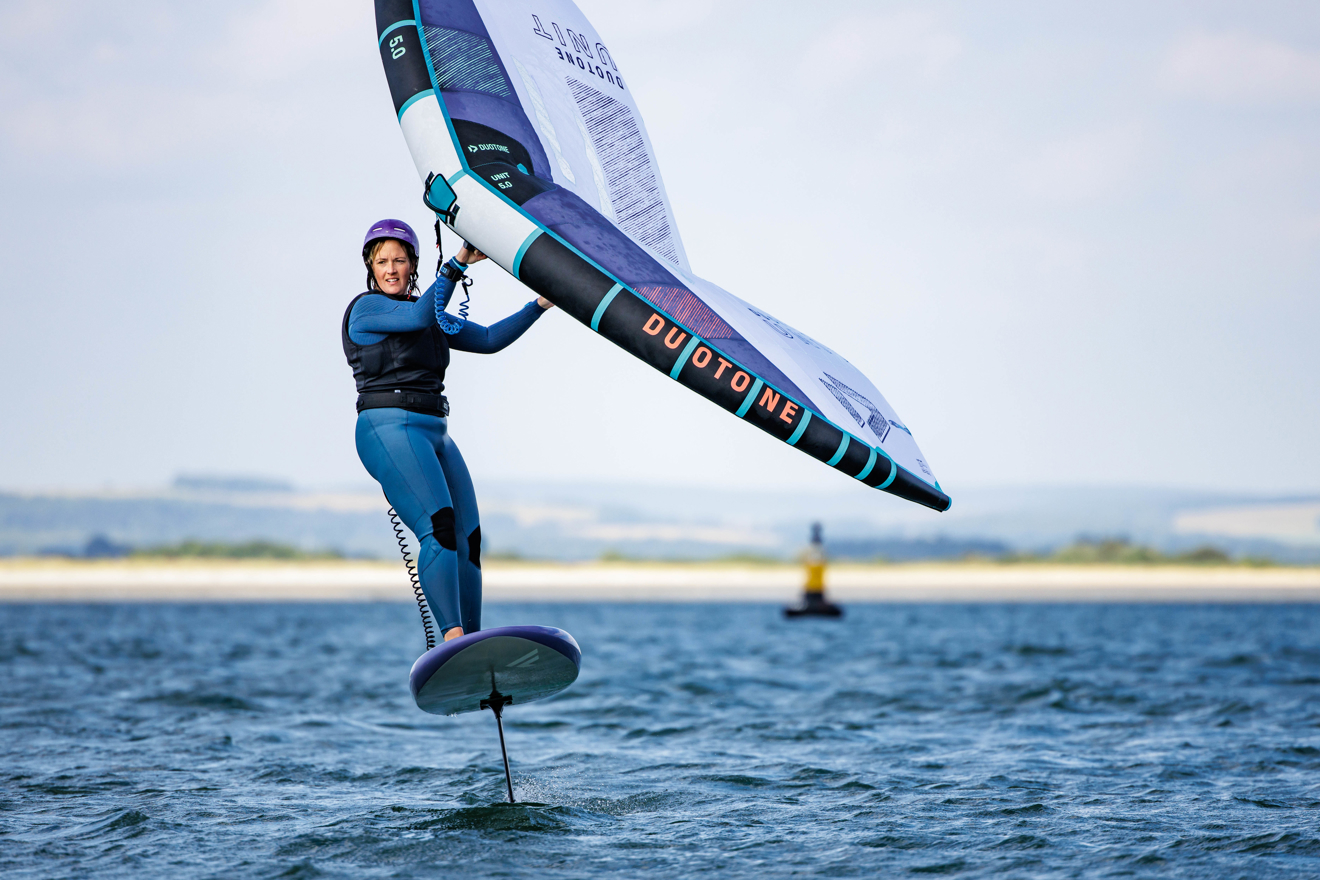Wing leashes
Leash choice for wingsurfing and wingfoiling safety
If you are wingsurfing or wingfoiling, leashes will keep both your board and wing attached to you so that they can’t float away. The sport is relatively new, so there is very little data available on incidents, but some of the lessons learned from paddleboarding are helpful for making the right leash choices for maximum safety on the water.
Leash length (attachment to board)
Your leash needs to be long enough that if you fall off your board isn’t so close that it rebounds into you. At the same time, the leash shouldn’t be so long that your board risks flying off and hitting another water user.
Straight or coiled?
Board to rider
Choosing a coiled leash, rather than a straight leash, can help prevent excess length getting caught under your feet or around the foil.
Rider to wing
Riders often use an elasticated straight leash to attach themselves to their wing. It’s important that there’s enough stretch in the leash to reduce snatch or shock loading. Equally, you don’t want the leash to be so long that you get entangled when you fall off or do a turn.
Leash attachment type
Many leash attachments consist of a webbing and Velcro strap with a metal swivel connecting the leash, allowing it to move in all directions. We recommend looking for a strap that you can attach one-handed. Ideally one with a closed loop, rather than fully opening, so that it doesn’t accidently release if the Velcro catches.
Where to attach your leash
Where on your body you attach your board leash will be dictated, in part, by the water type and conditions.
For flat, non-flowing water such as reservoirs, lakes and canals, any type of comfortable board leash should be suitable as there’s little risk of entanglement with other objects.
If you’re on flowing water, such as on rivers or estuaries, there’s greater risk of entanglement around fixed objects such as mooring buoys or tree branches. Here, a waist leash will be easier to release if your board is taken one side of the object and you the other.
When winging on other types of water, or in different conditions, you should risk assess the environment, your ability, and the proximity of help to make an informed decision on leash type.

Make sure your leash is accessible
If you choose a waist leash, make sure you fit it correctly so that it can’t ride up under an impact vest or buoyancy aid. If you need to release it, you want it to be accessible.
If you wear an ankle or wrist leash, make sure you attach it over the top of your wetsuit or rash vest.
Pre-sail checks
Before you head out on the water, check:
- Wear and tear to the leash – you can check this by feel or a quick visual inspection
- There’s still plenty of elasticity
- Swivel joints are free moving and there’s no corrosion
- The stitching on any attachments is in good order
- Velcro is clear of debris and still attaches firmly
- Fixings on the board and wing are in good order
More ways to stay safe on the water
Build your skills
Learn to wingsurf or improve your wingsurfing at an RYA recognised training centre. Or take your winging to the next level with a first flights or sustained flights wingfoiling course.
Wear a buoyancy aid or impact vest
Choose and fit a buoyancy aid or impact vest to keep yourself afloat and protect your torso.
Understand cold water shock
Cold water shock is a real danger in water below 15°C. Find out how to minimise your risk
Free third-party liability insurance
As an RYA member you can take advantage of free third-party liability insurance for winging and other water sports.
Already a member? Simply update your boating interests to activate your cover, T&Cs apply.
Not a member? Join today to enjoy this and other great benefits.
